PipingProjects.eu is one of the leading Boiler Tube Manufacturer in Europe. Boiler Tubes are an important component in the building of boilers, which are widely used in many sectors to create steam or hot water. These tubes function as conduits, transferring heat generated during the combustion process to water, resulting in the generation of hot water or steam. Boiler Tubes are designed to endure high temperatures, pressure, and thermal stress, making them crucial to the safe and effective functioning of boilers. We are also a well-known Boiler Tube Supplier in Europe.
Boiler tubes are commonly formed of carbon steel, alloy steel, or stainless steel, depending on the use. The operating temperature, pressure, and corrosive nature of the chemicals used in the boiler process all have an impact on material selection.
In addition to its primary role of withstanding high temperatures and pressures, boiler tubes must have outstanding thermal conductivity to efficiently transmit heat. The tubes are available in a variety of diameters and configurations to fulfill the unique requirements of various boiler systems, therefore improving the overall efficiency and safety of industrial operations that rely on steam production.

Does this product seem useful to you?
Reach out to us now for quick support.
Trusted
Supplier
Genuine
Product
Easy
purchase
Boiler Tube Specification, Size & Grades
As a trusted Boiler Tube Supplier in Europe, our Boiler Tubes are available in different standards, grades, materials and specifications.
| Property/Parameter | Typical Values/Specifications |
|---|---|
| Tube Size (OD and WT) | e.g., 2 inches OD x 0.25 inches WT |
| Length | e.g., 20 feet or as per customer requirements |
| Heat Treatment | Annealed, Normalized, Quenched and Tempered, etc. |
| Tensile Strength | Varies with material and grade (e.g., 60,000 - 100,000 psi) |
| Yield Strength | Varies with material and grade (e.g., 30,000 - 80,000 psi) |
| Hardness | Varies with material and heat treatment (e.g., Rockwell B or C scale) |
| Corrosion Resistance | Typically specified for stainless steel tubes |
| Pressure Rating | e.g., 3000 psi, 6000 psi, or higher |
| Temperature Rating | e.g., Up to 600°C (1112°F) or higher |
| Certification | ASME, ASTM, EN, DIN, JIS, or other relevant standards |
| Surface Finish | Smooth, Pickled and Passivated, Polished, etc. |
| Testing & Inspection | Non-destructive testing (NDT) methods like ultrasonic, radiographic, or eddy current, hydrostatic test, visual inspection, etc. |
| Additional Requirements | Any specific customer or industry requirements |
| Grade | |
| Stainless Steel | 200 Series - 201, 202, 205.
300 Series 301, 302, 303, 304, 304L, 308, 309, 309S, 310, 310S, 314, 316, 316L, 316TI, 317, 317L, 321, 347. 400 Series 405, 409, 429, 430, 430F, 430FSe, 434, 436, 442, 446, 403, 410, 414,416, 416Se, 420,420F, 422, 431, 440A, 440B, 440C. 500 Series - 501, 502. 600 Series - 630 (17-4 PH). |
| Carbon Steel | ASTM A106 Gr. A , B & C API 5L Gr. A / B, X42 ,X52 ,X60 ASTM A 53 Gr. A/B |
| Titanium | Titanium 6-4, Gr 1, Gr 2, Gr 3, Gr 4, Gr 5, Gr 7, Gr 9, 5-2.5, 6-2-4-2, 6-4 ELI, 6-6-2. |
| Hastelloy | C22, C276, X, B-2. |
| Monel | 400, K500. |
| Nickel Alloy | Nickel 200 Nickel 201, Alloy 20, Alloy 286, Alloy 218 (Nitronic 60), Nitronic 50 (XM-19). |
| Cupro Nickel | Cu 90-10 (C70600,CW352H), Cu 70-30 (C71500, CW354H). |
| Inconel | 601, 625, 660A, 718, X-750, 825, 925, 608. |
| Duplex / Super Duplex | D S31803, D S32205, SD S32750, SD S32760, SD S32950. |
| Chromium Molybdenum Steel | A387 Gr 2, A387 Gr 12, A387 Gr 11, A387 Gr 22, A387 Gr 22L, A387 Gr 7, A387 Gr 21, A387 Gr 21L, A387 Gr 9, A387 Gr 91. |
| Nichrome Alloy | CrNi 20/80. |
| Copper | ASTM B1, ASTM B2, ASTM B3, ASTM B152, ASTM B124, ASTM B133. |
| Brass | Alloy 260, Alloy 272, Alloy 330, Alloy 353, Alloy 360, Alloy C48200 - C48500, Alloy 464. |
| Bronze | Alloy 954, Alloy 933. |
| Case Hardening Steels | 10C4, 15C8, 15Cr3, 16Mn5Cr4, 20MnCr5, 15Ni5Cr4Mo1, 15Ni5Cr4Mo2, 20Ni7Mo2, 20NiCrMo2, 14CrNi6. |
| En Series | En8, En9, En19, En24, En30B, En31, En36, En45, En47, En48. |
| Mild Steel | Sae 4118, Sae 4120, Sae 4120, Sae 4130, Sae 4135, Sae 4137, Sae 4140, Sae 4142, Sae 4145, Sae 4147, Sae 4150, Sae 4161, Sae 8620. |
What Materials is Used to Make Boiler Tubes
Size Chart of Boiler Tube
| Length | Size |
|---|---|
| 16' 6" | 2.5" 0.105 SA178A |
| 18" 6" | 2.5" x 0.105" SA178A |
| 18' 6" | 2" 0.105" SA178A |
| 16' 6" | 2" 0.105" SA178A |
| 22' 6" | 2" 0.105" SA178A |
| 20' 6" | 2" 0.105 SA178A |
| 22' 6" | 2.5" X 0.105" SA178A |
| 20' 6" | 2.5" X 0.105 SA178A |
| 26' 6" | 2.5" X 0.105" SA178A |
| 24 6" | 2.5" 0.105" SA178A |
| 40 6" | 2.5" 0.105" SA178A |
| 28' 6" | 2.5" 0.105" SA178A |
| 20' O" | 2.5" x 0.120 SA178A |
| 26' 6" | 2" X 0.105" SA178A |
| 24' 6" | 2" <0.105" SA178A |
| 28' 6" | 2" 0.105" SA178A |
| 32' 6" | 2" x 0.105" SA178A |
| 40' 6" | 15" x 0.120 SA178A |
| 40' 6" | 1.5" "x0.105" SA178A |
| 40' 6" | 1.5" x 0.150 SA178A |
| 40' 6" | 15" x 0.135 SA178A |
| 40' 6" | 1.75" 0.135 SA178A |
| 40' 6" | 15" x 0.180" SA178A |
| 40' 6" | 175° X 0.180" SA178A |
| 40' 6" | 1.75" x 0.150" SA178A |
| 40' 6" | 2" X 0.120" SA178A |
| 40' 6" | 2" 0.150 SA178A |
| 40 6" | 2" X 0.135 SA178A |
| 40' 6" | 2" X 0.165 SA178A |
| 40 6" | 2" 0.203 SA178A |
| 40' 6" | 2" x 0.180" SA178A |
| 40' 6" | 2" X 0.220 SA178A |
| 40' 6" | 2.5" 0.120" SA178A |
Cold Drawn vs Hot Finished Seamless Boiler Tube
How are Boiler Tubes Inspected and Maintained?
Equivalent Grades of Boiler Tube
| Material Type | ASTM/ASME (USA) | EN (Europe) | DIN (Germany) | BS (UK) | JIS (Japan) | ISO (International) |
|---|---|---|---|---|---|---|
| Carbon Steel | A36 | S235JR | ST37-2 | 40A/B | SS400 | ISO 630-2 S235 |
| 304/304L | 1.4301/1.4307 | X5CrNi18-10 | 304S15 | SUS304 | ISO 15510 X5CrNi18-10 | |
| 316/316L | 1.4401/1.4404 | X5CrNiMo17-12-2 | 316S31 | SUS316 | ISO 15510 X5CrNiMo17-12-2 | |
| Aluminium | 6061 | EN AW-6061 | AlMg1SiCu | H20 | AA6061 | ISO 6361 6061 |
| Copper | C11000 | Cu-ETP | E-Cu58 | C101 | C1100 | ISO 13388 Cu-ETP |
PipingProjects.eu is a leading Boiler Tube Manufacturer in Europe. These are a few examples of Boiler Tubes you can find at Piping Projects in Europe.
Advantages of Boiler Tube
Production Process of Boiler Tube
Boiler Tube is produced in seven steps. It manufactures a wide range of shapes, goods, and parts, ranging from Boiler Tube and Coil.
How do You Prevent Boiler Tubes from Rusting?
Boiler Tube Used in Industries

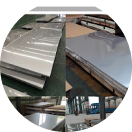
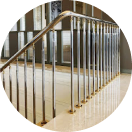
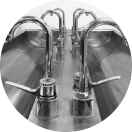
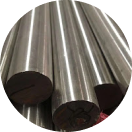
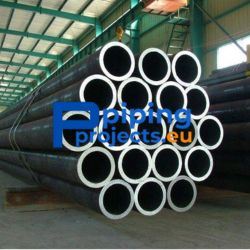
Boiler Tube Manufacturer in Europe
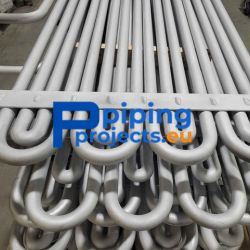
Boiler Tube Supplier in Europe
